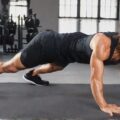Introduction to the Kick Through Exercise
The kick through exercise is a dynamic, full-body movement that combines elements of strength, flexibility, and cardiovascular fitness. This exercise not only challenges your entire body but also promotes mind-body connection and overall wellbeing. By incorporating the kick through into your fitness routine, you’ll experience improvements in core strength, balance, and coordination while enjoying a fun and engaging workout.
In this article, we’ll explore the benefits of the kick through exercise, provide step-by-step instructions on how to perform it correctly, and offer variations to suit different fitness levels. We’ll also discuss how this exercise can contribute to your overall health and happiness, emphasizing the importance of a compassionate approach to fitness.
Benefits of the Kick Through Exercise
The kick through exercise offers numerous benefits for both physical and mental wellbeing:
- Full-body engagement: This exercise targets multiple muscle groups simultaneously, including the core, shoulders, arms, and legs.
- Improved coordination: The dynamic nature of the movement enhances your body awareness and coordination.
- Increased flexibility: Regular practice can improve your hip and shoulder mobility.
- Enhanced cardiovascular fitness: The kick through can elevate your heart rate, providing a cardio boost.
- Stress relief: Focusing on the movement can help clear your mind and reduce stress.
- Boosted confidence: Mastering this challenging exercise can increase your self-esteem and body positivity.
How to Perform the Kick Through Exercise
Follow these steps to perform the kick through exercise with proper form:
- Start in a high plank position with your hands shoulder-width apart and your body in a straight line.
- Lift your right hand off the ground and shift your weight onto your left hand.
- Simultaneously, rotate your body to the left and lift your right leg off the ground.
- Kick your right leg through the space between your left arm and left leg.
- As you kick through, your body should rotate so that your chest is facing upward.
- Extend your right arm overhead to complete the movement.
- Pause briefly, then return to the starting plank position.
- Repeat on the other side, alternating legs with each repetition.
Remember to move slowly and deliberately as you learn the exercise, focusing on maintaining control and proper form throughout the movement.
Modifications and Variations for Different Fitness Levels
The kick through exercise can be adapted to suit various fitness levels and goals. Here are some modifications and variations to consider:
For Beginners:
- Half kick through: Instead of fully extending your leg, practice kicking it halfway through and returning to the starting position.
- Supported kick through: Perform the exercise with your feet elevated on a low step or bench to reduce the range of motion.
For Advanced Practitioners:
- Weighted kick through: Hold a light dumbbell in the hand that reaches overhead for added resistance.
- Plyometric kick through: Add a small jump as you transition from the plank to the kick through position for increased intensity.
Remember to listen to your body and progress at your own pace. It’s essential to approach fitness with compassion and respect for your current abilities.
Incorporating the Kick Through into Your Workout Routine
To make the most of the kick through exercise, consider the following tips for incorporating it into your fitness routine:
- Warm-up: Use the kick through as part of your dynamic warm-up to prepare your body for more intense exercises.
- Circuit training: Include the kick through in a circuit workout, performing it for 30-60 seconds between strength exercises.
- HIIT workouts: Incorporate the kick through into high-intensity interval training sessions for a cardiovascular challenge.
- Cool-down: Practice slower, more controlled kick throughs as part of your cool-down routine to improve flexibility and body awareness.
Remember that consistency is key when it comes to reaping the benefits of any exercise. Aim to practice the kick through regularly, but always listen to your body and give yourself time to rest and recover.
Mindful Approach to the Kick Through Exercise
While the physical benefits of the kick through exercise are significant, it’s equally important to approach this movement with mindfulness and compassion. Here are some tips for a more holistic practice:
- Focus on breath: Coordinate your breathing with the movement, inhaling as you prepare to kick and exhaling as you extend your leg and arm.
- Practice gratitude: As you perform the exercise, take a moment to appreciate your body’s strength and capabilities.
- Set intentions: Before beginning your workout, set a positive intention for your practice, such as cultivating self-love or inner peace.
- Embrace imperfection: Remember that it’s okay if your form isn’t perfect or if you need to take breaks. Treat yourself with kindness and celebrate your efforts.
By approaching the kick through exercise with mindfulness and compassion, you’ll not only improve your physical fitness but also nurture your mental and emotional wellbeing.
FAQ: Common Questions About the Kick Through Exercise
1. How many kick throughs should I do in a workout?
The number of kick throughs you should perform depends on your fitness level and goals. For beginners, start with 3 sets of 5-10 repetitions on each side. As you progress, you can increase the number of repetitions or incorporate the exercise into timed intervals.
2. Can the kick through exercise help with weight loss?
While the kick through can contribute to calorie burning and overall fitness, it’s important to remember that weight loss is primarily influenced by diet and overall lifestyle. Incorporate the kick through as part of a balanced exercise routine and maintain a healthy, nutritious diet for best results.
3. Are there any precautions I should take before attempting the kick through?
If you have any existing injuries or medical conditions, particularly those affecting your shoulders, wrists, or lower back, consult with a healthcare professional before attempting the kick through. Start slowly and focus on proper form to prevent injury.
4. How can I make the kick through exercise more challenging?
To increase the difficulty of the kick through, try adding weights, increasing the speed of the movement, or incorporating it into a high-intensity interval training (HIIT) routine. You can also experiment with different variations, such as the plyometric kick through mentioned earlier.
5. Can the kick through exercise improve my flexibility?
Yes, regular practice of the kick through can help improve flexibility, particularly in the hips and shoulders. The dynamic nature of the movement encourages a greater range of motion in these areas. To further enhance flexibility, consider incorporating dedicated stretching exercises into your routine as well.









